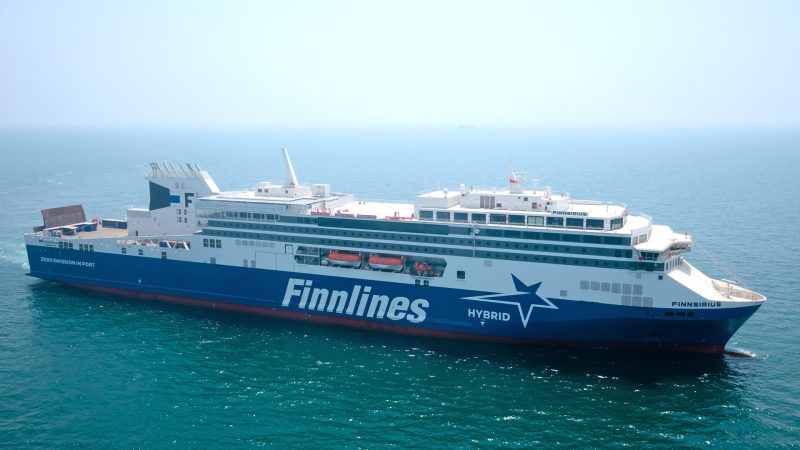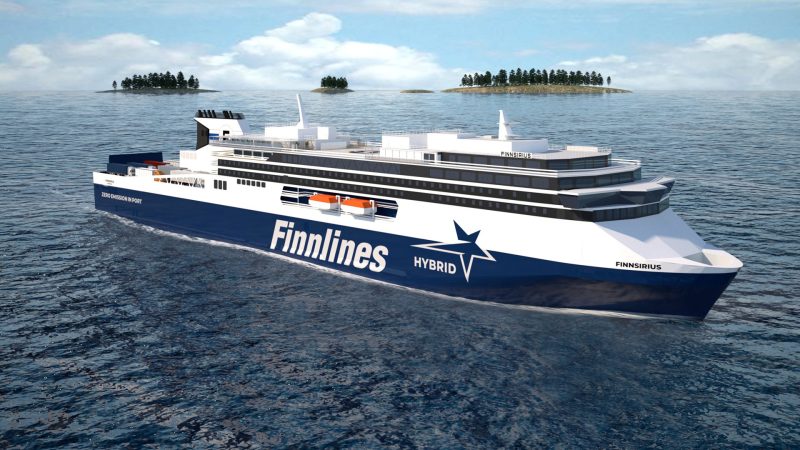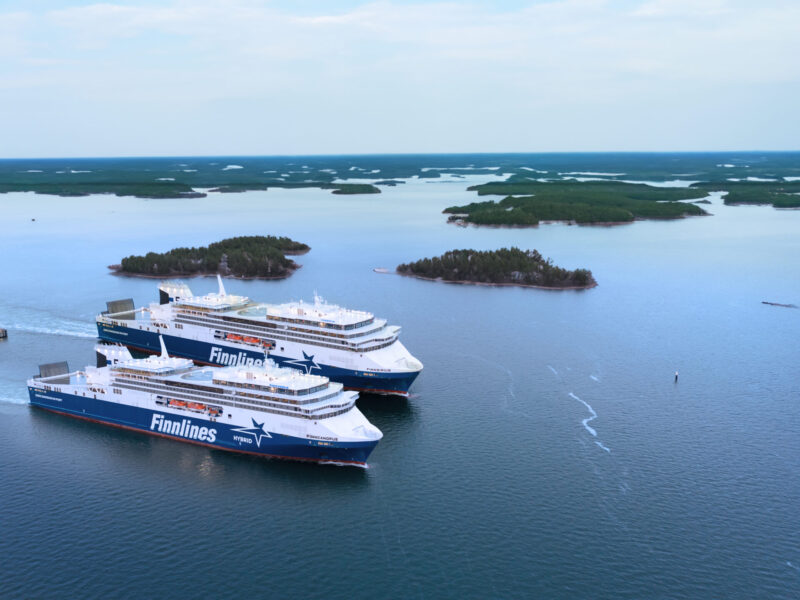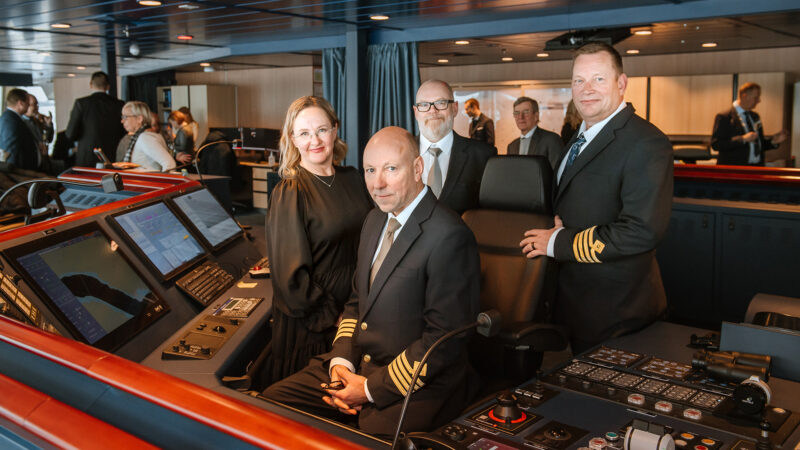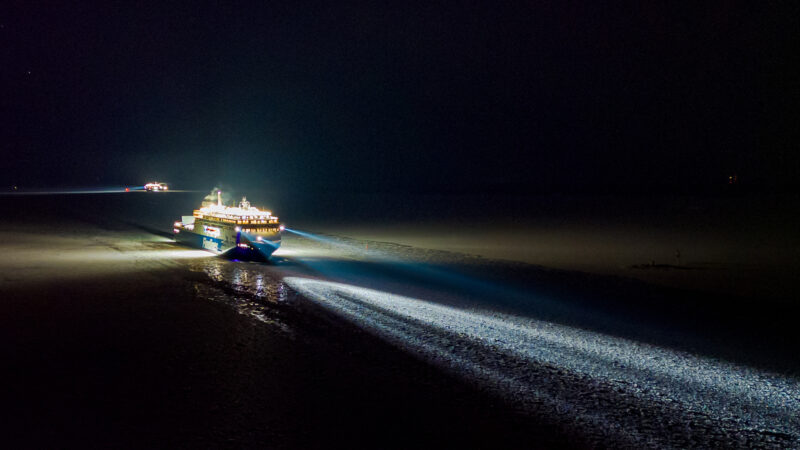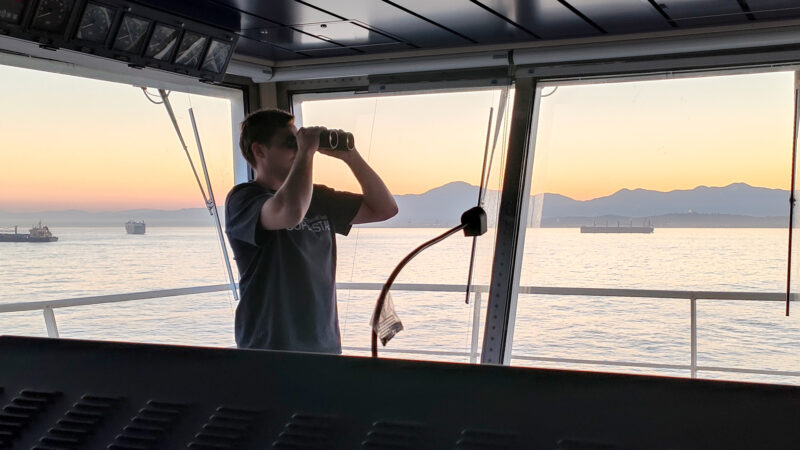Sea Trials of the New Finnsirius: A Blue Ship in the Yellow Sea
On the Yellow Sea, an unidentified floating object marked with the letter F was spotted as the Finnsirius set sail for the first time, at full speed!
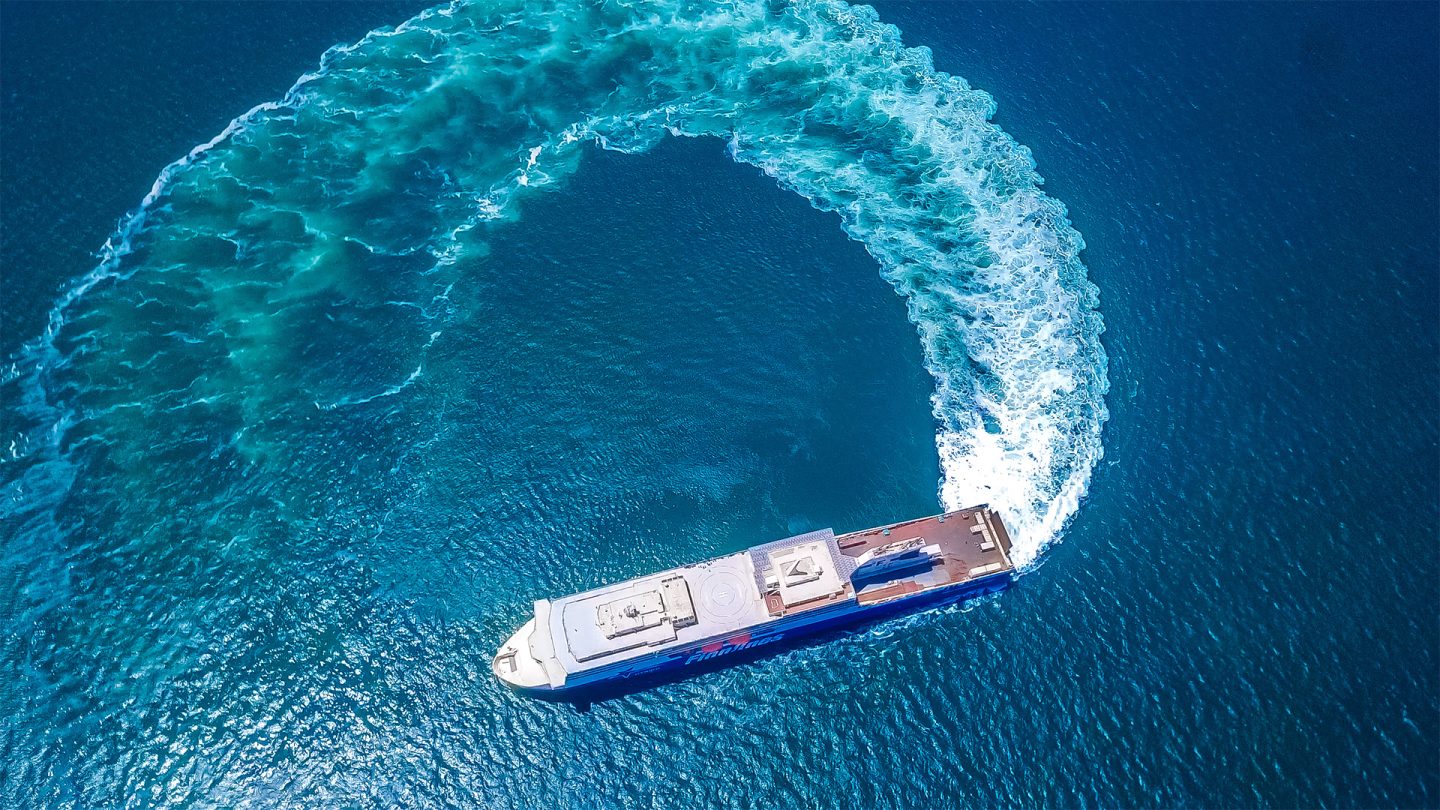
During sea trials, a new vessel gets to showcase its capabilities as it is put to the test in a real maritime environment. The ship moves under its own propulsion, undergoing a comprehensive testing program at sea. In the case of the Finnsirius, the sea trials lasted for nine days, during which time its engines, equipment, and systems were tested, from the main engines to the pizza oven.
Thrilling maneuvers: The pulse-pounding tests of the Finnsirius
During the sea trials, one of the most impressive and thrilling tests aboard the Finnsirius involved extreme maneuvers. Imagine what it felt like to be on board when the 235-meter steel giant came to a sudden stop from a speed of 20 knots. Captain Johnny Forss pushed the handles of the main engines astern, requesting the opposite force from the ship’s machinery that had just been propelling it forward. The mass of the vessel kept it moving forward, but the speed was gradually reduced by adjusting the pitch of both propellers to go into reverse, causing the vessel to decelerate inevitably. This maneuver is known as a crash stop. The distance traveled by the Finnsirius during this abrupt stop was measured, which in colloquial terms could be called the braking distance.
During the sea trials, the crash stop was one of the most thrilling performance-related tests of the Finnsirius. Such an abrupt stop is never intended to be performed during regular operation, as it could cause discomfort and pose risks to passengers and cargo. A test like the crash stop is best conducted during the sea trials, allowing the crew to anticipate the effects of the maneuver while also assessing the vessel’s performance capabilities.
The Finnsirius experienced other intense maneuvers during the turning circle test, zigzag maneuver, and fin stabilizer test. However, all tests were executed smoothly, and the results met expectations.
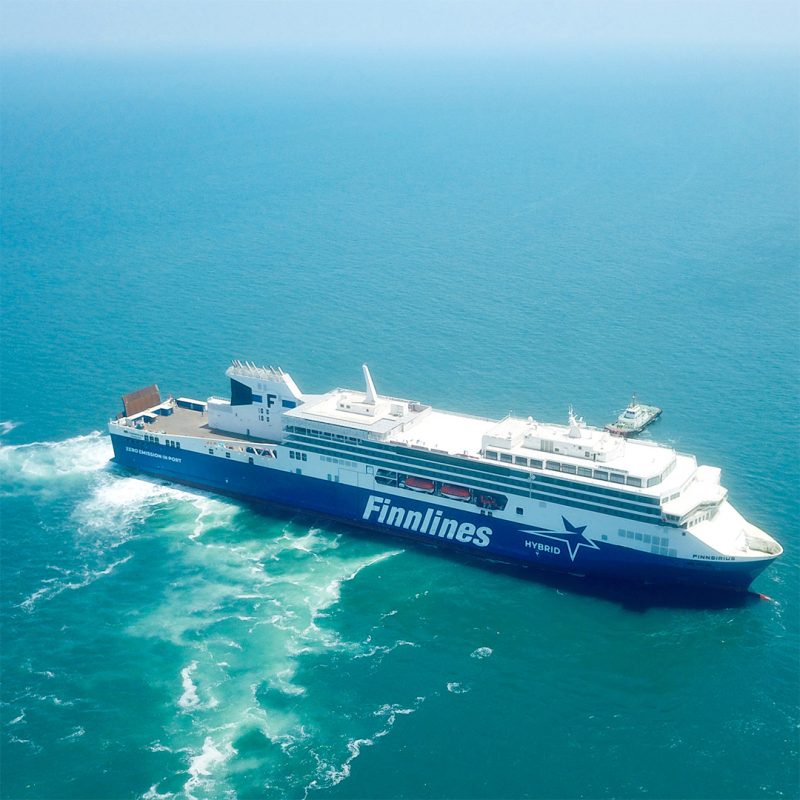
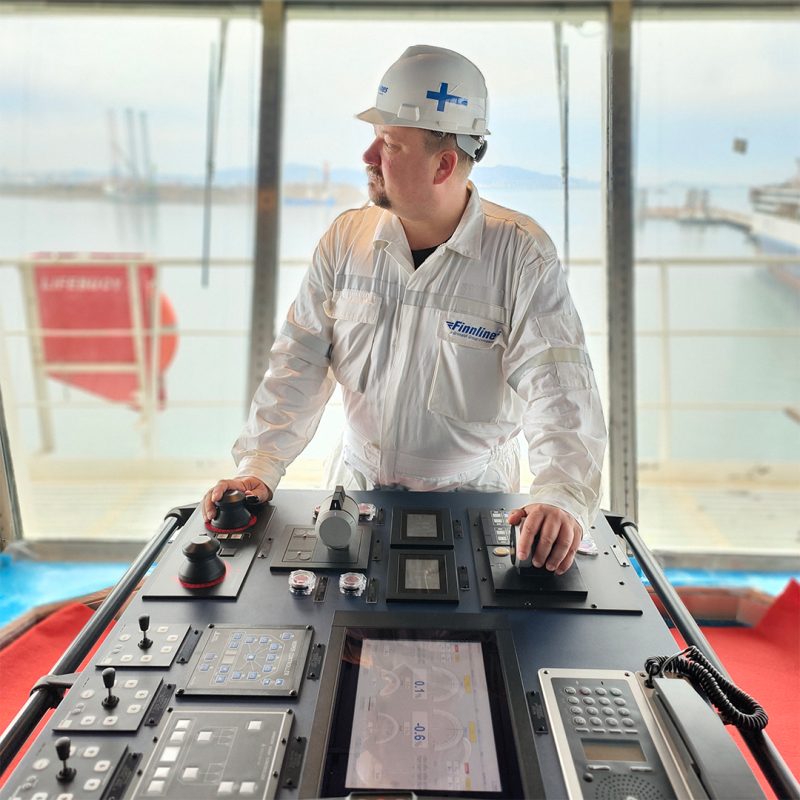
A vibration-free ship and vibrating step counters
During the sea trials, careful attention is paid to measuring vibrations and noise because ships have numerous components rotating at high speeds, such as propeller shafts and generators. Naturally, the operation of the main engines also generates noise and vibrations transmitted through the hull. The higher the load on the ship’s engines, the more the overall structure vibrates. In shipbuilding, the aim is to achieve a vessel that vibrates and produces as little noise as possible. In addition to passenger comfort and cargo stability, minimizing vibrations also helps to extend the life of the machinery and equipment. Equipment that excessively shakes, rattles, and vibrates tends to wear out more quickly.
Overall, the Finnsirius is expected to be a very quiet and low-vibration ship. Smooth journeys between Naantali and Kapellskär are in store!
During the test period, testers did experience some vibrations—on their pedometers. Many recorded daily step counts of tens of thousands because various tests were carried out throughout the ship.
During these days, radar blind spots were determined, and anchoring procedures were tested at sea. All kitchen appliances were turned on, and all installed lights were switched on. This tested the electrical system’s load in a realistic situation when the ship is full of passengers. The exhaust gas cleaning system was tested at different load levels, as well as the air lubrication system. Fuel consumption was measured and checked against the expected consumption based on the overall ship’s design and the intended cruising speed between Naantali and Kapellskär.
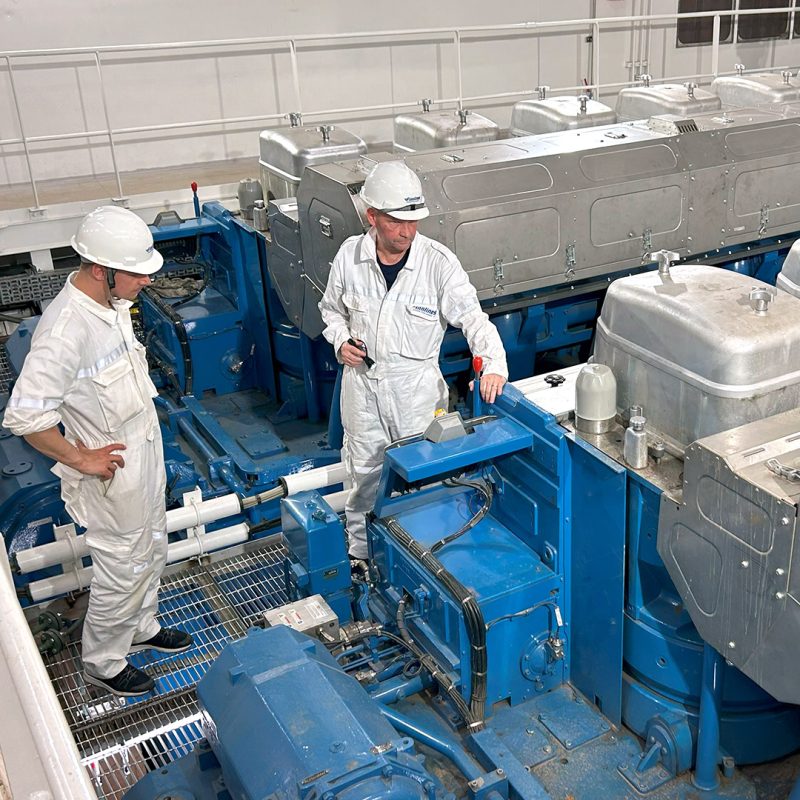
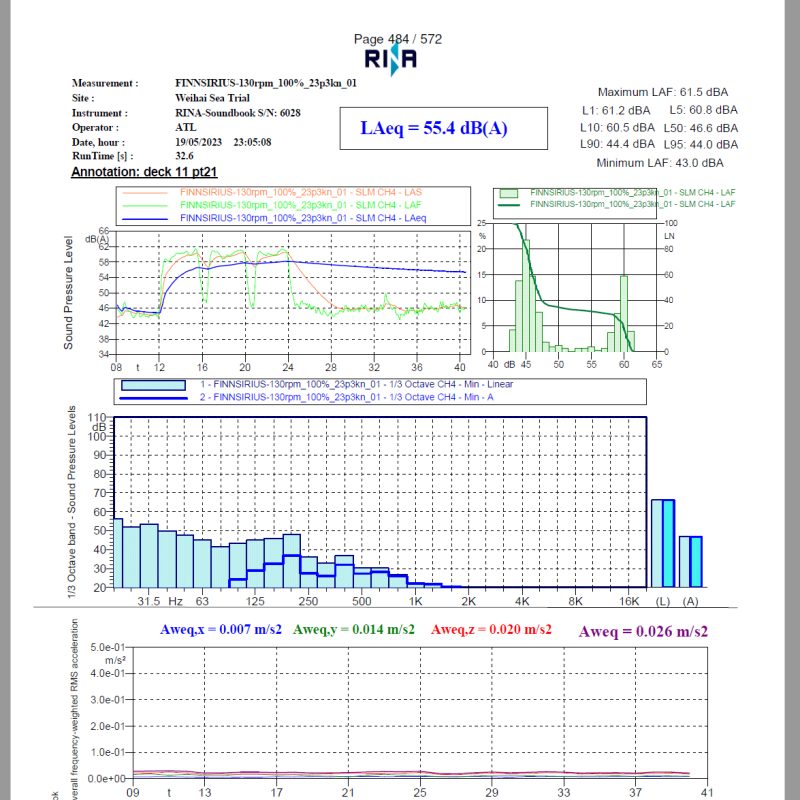
Safety tested
During the sea trials, the testing program also included the examination of all safety devices aboard the Finnsirius. As part of the testing, a fast rescue boat was launched at a speed of five knots. Lowering a rescue boat from a moving ship may sound easy, but it is actually a specialized skill requiring precision. The testing of the rescue boats is regularly conducted even during normal operations.
Among other safety tests, one of the most thrilling was the blackout test. In this test, the power supply was intentionally cut off to assess how the emergency systems restored electricity first to essential systems, known as emergency consumers, before restoring power to the entire ship.
During the four-hour Unmanned Engine Room Operation Test, the scenario simulated a situation where there was no maintenance crew in the engine room, and the machinery had to operate flawlessly and without any alarms for four hours. The test went smoothly for the Finnsirius.
Additionally, the general alarm, which is audible in all areas of the ship, was also tested.
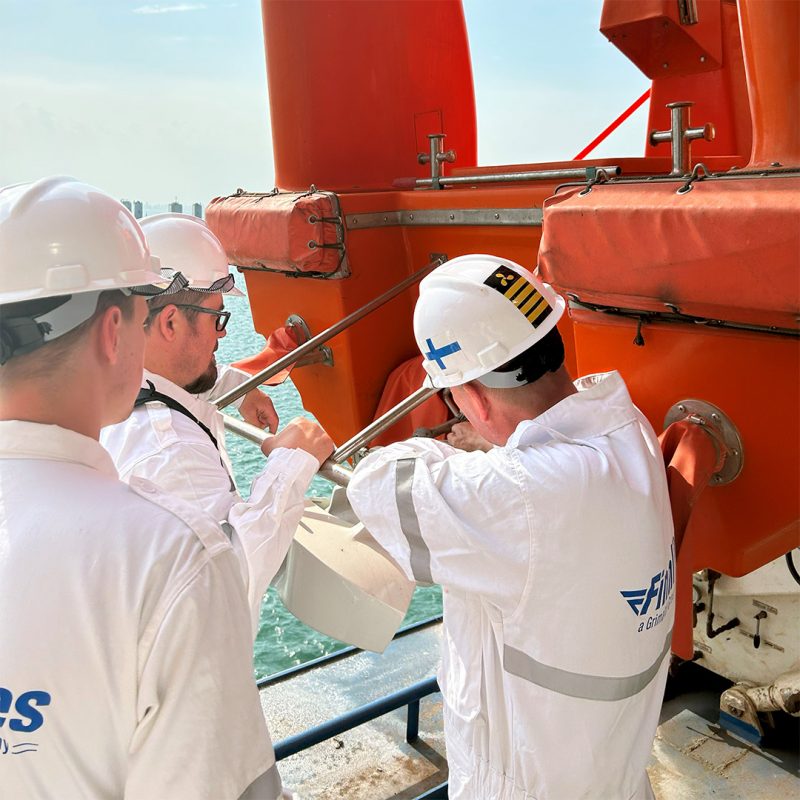
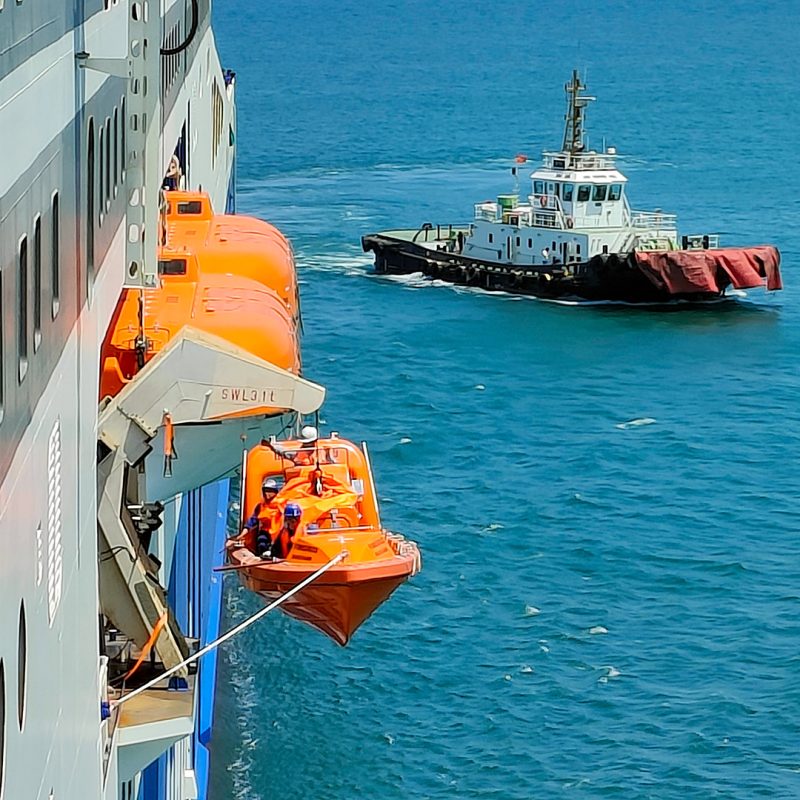
Temporary accommodation on the car deck
During the sea trials of Finnsirius, the finishing touches of the hotel department were continued. Three hundred workers from the shipyard joined the trials and were accommodated in the car deck, in a temporary barracks village. Throughout the sea trials, various tasks were carried out, including the finalization of floors, bar counters, saunas, and the installation of numerous different lighting fixtures.

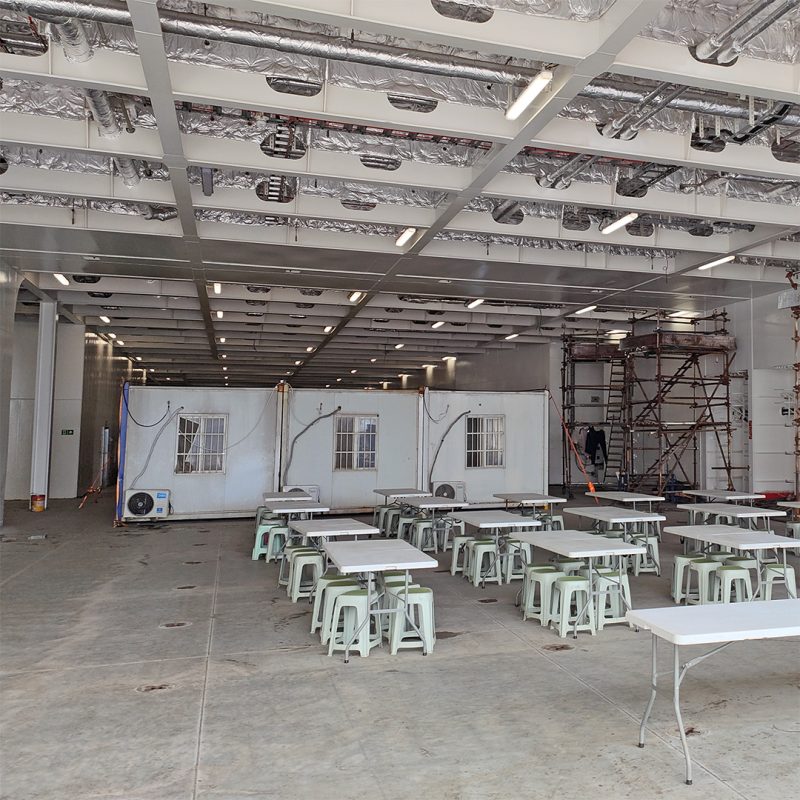
Coffee consumption surprise: Contrasting tastes during sea trials
As a detail from the hustle and bustle of the sea trials, it should be mentioned that coffee had to be replenished on Finnsirius after just three days of testing. The consumption of the black beverage took the Chinese catering department by surprise. There was a surplus of tea after the sea trials. Coffee consumption in Europe, especially in Finland, is at a completely different level than what is typically accustomed to in China.
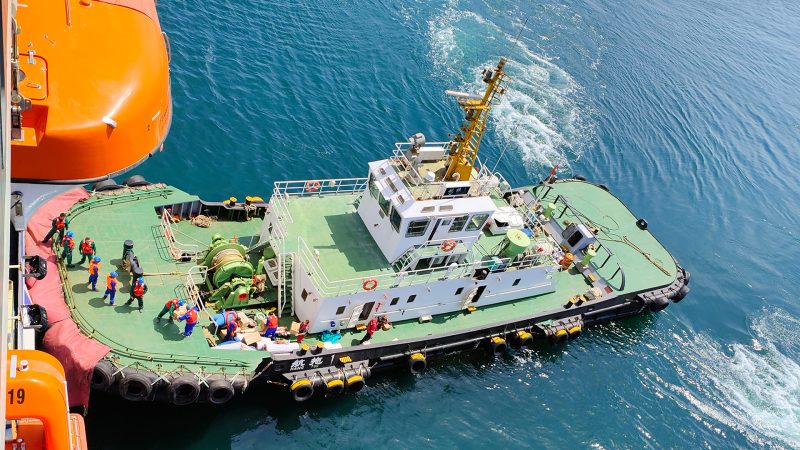
Navigating an adventurous path: the unconventional journey of the mystery ship
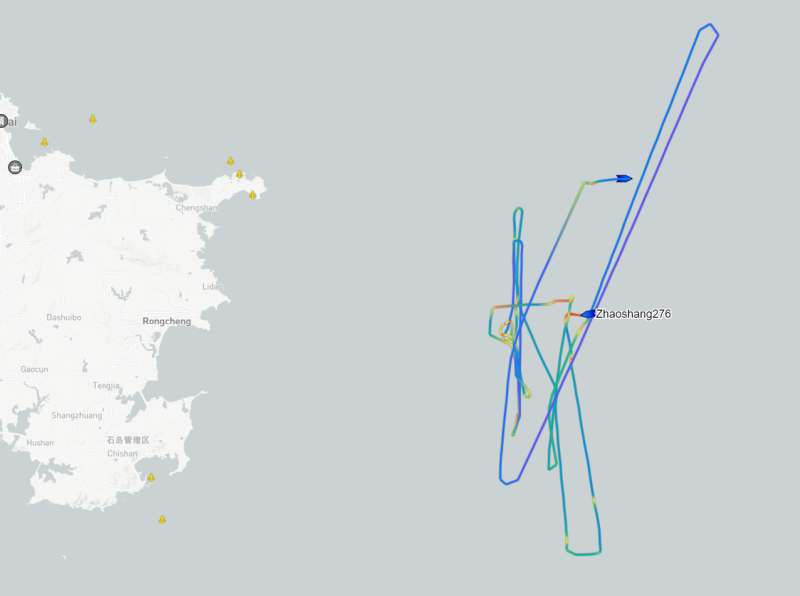
If you carefully checked services like Marinetraffic in May, you may have wondered about the intriguing movements of the vessel Zhaoshang276 in the Yellow Sea, off the coast of the Shandong Peninsula. Since the Finnsirius has not been officially registered yet, it sailed under a pseudonym. The number 276 refers to the Finnsirius’ newbuilding number, which we also mentioned in a previous blog post.
The test drive route caused some trouble with mobile phones, which was not serious, but the proximity of the Korean Peninsula led to the phones frequently switching to South Korean cell towers, causing the automatically set time on the phones to change. There is a one-hour time difference between Weihai and the Korean Peninsula.
From concept to completion, like two peas in a pod
As the sea trials of Finnsirius have now concluded successfully, the ship is almost ready to embark on its journey back to Finland, under the command of Johnny Forss. Despite outward appearances, there is still work to be done for a few more weeks. The Weihai shipyard will be left behind in July, once all the installations on the hotel side are completed. The installation and inspection of restaurant seats, cabin faucets, beds, toilet seats, floors, and curtains, among other things, take time. Everything must meet the quality standards agreed upon in discussions with the shipyard, as demonstrated by the mock-up.
Upon leaving the shipyard, Finnsirius will essentially be a fully equipped vessel. In Finland, there are some final touches to be made, such as stocking the duty-free shop and implementing shore power. These are finishing touches that are better suited to be done outside the shipyard environment.
